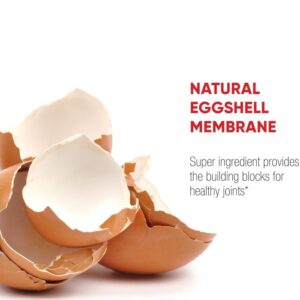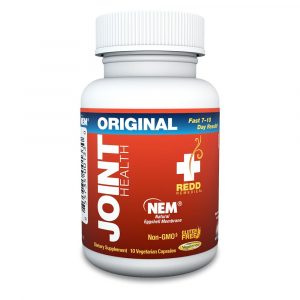Vitamin D
$17.06
Vitamin D is the sunshine vitamin and this D3 form delivers the same biologically active form of vitamin D produced in the body as a result of direct sunlight without the risk of unprotected UVB exposure. High potency with 5000IU per capsule. Proven effect for neck and back pain.
Since vitamin d is fat soluble. This is the original Vitamin D3 brand with Coconut oil, which aids in absorption by combining with a healthy, nutritious fat.

Prices & Offers Subject To Change
Vitamin D For Spinal Pain
With The Widespread Prevalence Of Vitamin D Deficiency, We Should Pay Attention To This Supplement In Relation To Neck & Back Pain.
As we age, degenerative conditions of the spine and decreased musculoskeletal function leave us susceptible to falls, fractures, pain and a number of chronic conditions. Supplementation is known to help reduce the risk of fractures because of it’s function in bone mineralization, however, it can also protect against falls by improving muscle function. This vitamin further has been shown to have a protective effect in diseases like cardiovascular conditions, diabetes, osteoarthritis and cancer. An analysis has shown supplementing with vitamin d can reduce mortality from all causes.
Supplementation For Neck & Back Pain
- According to a 2014 publication in World Neurosurgery, a study has indicated a correlation between individuals undergoing spinal surgery and a deficiency of D vitamin. Blood serum D levels were taken from individuals undergoing fusion for spinal instability and degenerative spinal spondylosis.
The authors discovered that Vitamin D deficiency was associated with individuals having a diagnosis of degenerative spondylosis. Additionally, it was noted that those who were middle aged, men, obese, diabetics and those who do not use D supplements showed a higher occurrence of deficiency.
- A 2013 issue of the journal Pain Physician found an association between deficiency of vitamin D and spinal stenosis of the lumbar spine. In this study, almost 75% of individuals with spinal stenosis had a vitamin D deficiency. Furthermore, the level of pain was also associate, with higher levels of pain associated with a high occurrence of D vitamin deficiency.
- A 2016 study in the Asian Spine Journal found a high prevalence of deficiency in patients with degenerative disc disease. The authors that traditional risk factors, such as older age and female gender was not sufficient in determining deficiency, therefore; they recommended a broader population strategy in prevention where the consequences of degenerative spinal diseases may be prevented or delayed.
- The 2013 issue of the Global Spine Journal found an association between D deficiency and cervical disc herniations in adults requiring spinal surgery. The deficiency was associated with a greater number of cervical disc herniations for an individual. The authors indicate that a deficiency of may increase the risk of back and neck pain from disc degeneration, disc herniation with nerve compression, as well as radiculitis.
Studies indicate vitamin D has the ability to decrease inflammatory chemicals of the outer part of the disc, the part that is torn or ruptured in a herniation. These inflammatory chemicals are responsible for pain, tissue destruction, as well as erosion of cartilage often seen with destructive degenerative conditions like Modic changes.
- A 2015 study in Lupus found 4000IU of D3 decreased pain and related inflammatory chemicals. It was able to reduce analgesic use and a major inflammatory chemical associated with disc disease was reduced by over 50%.
- A 2018 study in Clinical Rheumatology found that severe cases of deficiency had a causal relationship with subacute and chronic low back pain. The study was done over months of winter seasons and included 675 participants, concluding a possible pathogenic association directly related to levels of deficiency.
- A 2018 study in the journal PLoS One found insufficient blood levels of D has a “major contribution” to lumbar disc herniation.
I have been taking this vitamin since reading the above 2015 study. I have found this, along with the other supplements we recommend like tumeric, krill oil, and joint health has really made a difference with chronic disc disease problems, including the highly inflammatory Modic 1 changes.
Beyond The Spine
- An interesting 2019 report the in Journal of Clinical Orthopaedics and Trauma noted a case of pathological fracture and hip dislocation caused by vitamin D insufficiency in a 16 year old athlete. The patient fell on his right hip during jogging and sustained a right hip dislocation with fracture of the femoral head.
Because his fall was considered low energy, an endocrinologist was consulted to rule out primary contributing factors. He was found to have insufficient levels of vitamin D (22.4 μg/l), while other hormonal investigations were unremarkable. These type of injuries are usually seen in high energy incidents involving road traffic accidents or falls from heights. The authors concluded, “More research is necessary to investigate the relationship between vitamin D insufficiency and hip dislocations.”
- A 2021 study in International Journal of Clinical Practice found Vitamin D therapy has positive effects on balance and quality of life. Coupled with core strengthening and balance exercises offers better balance and fall prevention in postmenopausal women.
- A 2021 study in World Journal of Clinical Cases found an association between vitamin D deficiency, functional status of individuals with knee osteoarthritis and postural balance. The authors concluded, “Vitamin D deficiency is associated with worse severity, functional status, and postural balance in patients with OA [osteoarthritis].
- A 2024 study in the Annals of Otology, Rhinology & Laryngology found vitamin D deficiency and low sun exposure significantly increased the risk of developing tinnitus. The study demonstrated a significant association between vitamin D levels and tinnitus, providing data for additional research to investigate the role this vitamin in the causes and management of tinnitus















